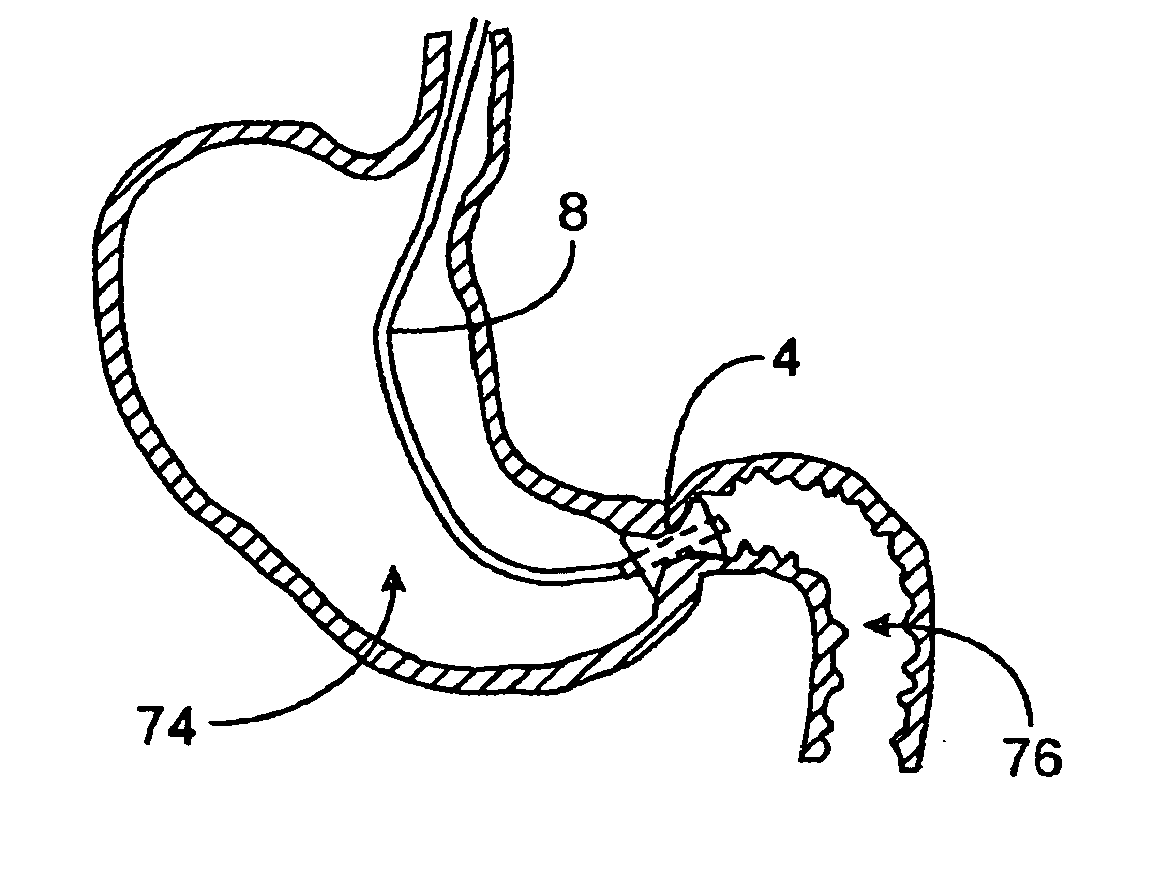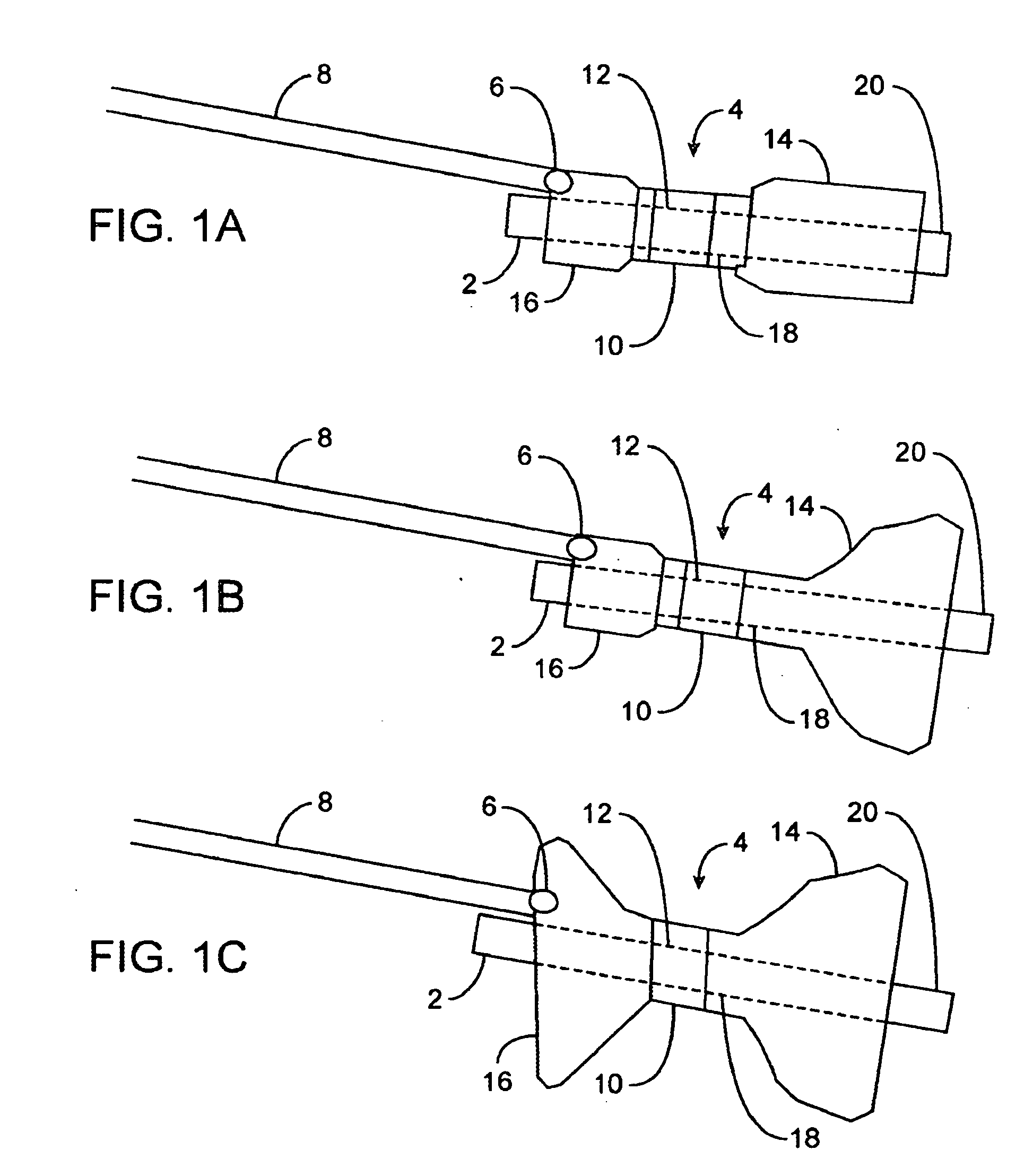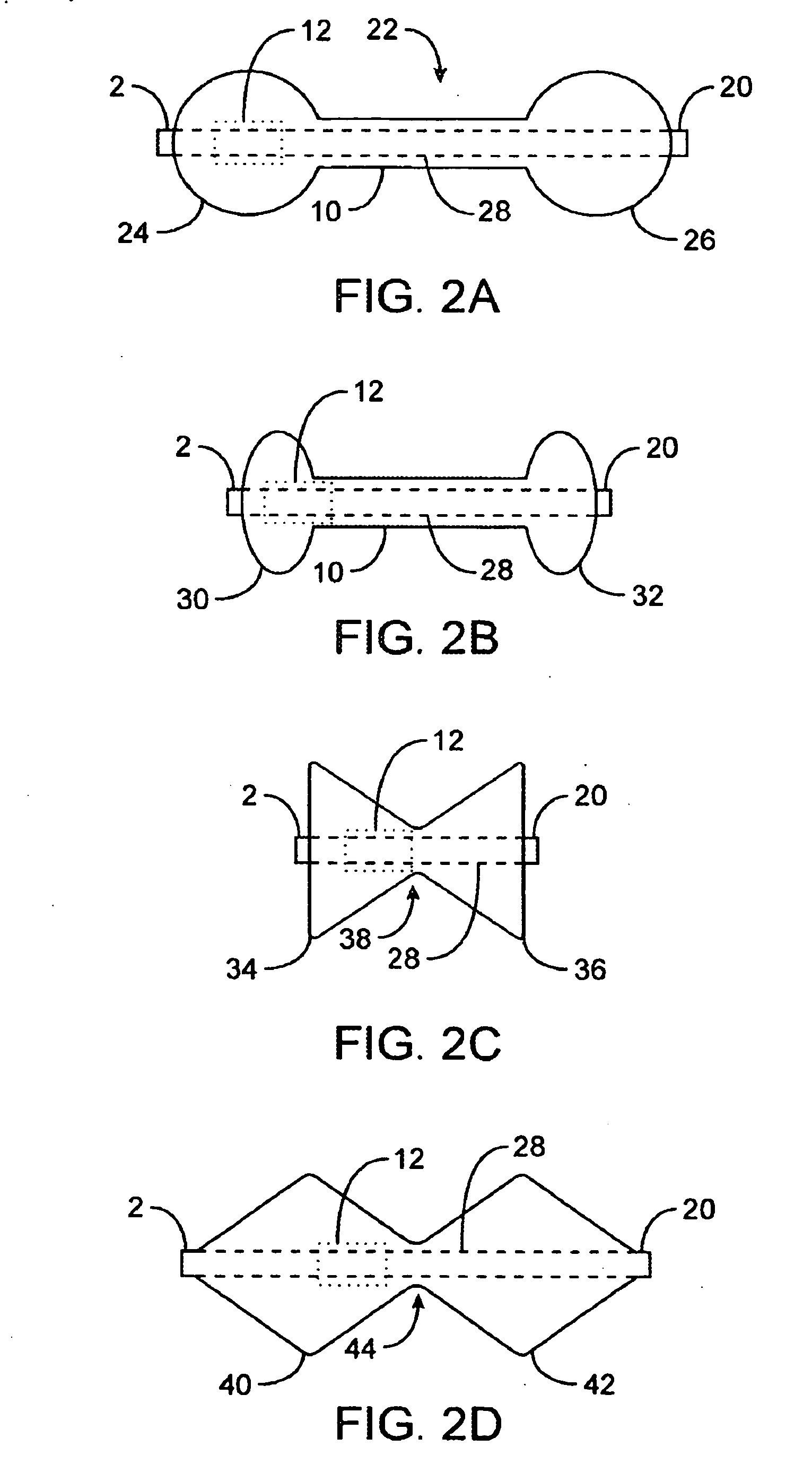Pyloric valve corking device
a technology of pyloric valve and corking device, which is applied in the field of pyloric valve corking device, can solve the problems of no commercially available supplements or drugs that have been found to successfully achieve weight reduction, no serious side effects or substantial ineffectiveness,
- Summary
- Abstract
- Description
- Claims
- Application Information
AI Technical Summary
Benefits of technology
Problems solved by technology
Method used
Image
Examples
Embodiment Construction
[0035]FIGS. 1A to 1C are cross-sectional views showing the expansion, respectively, of one variation of a pyloric corking device, which is designed to partially and / or intermittently obstruct a gastric opening, particularly the pyloric valve. In this particular variation, FIG. 1A illustrates the device 4 in an unexpanded or uninflated state and ready for delivery and / or insertion into the pyloric valve. FIG. 1B shows the distal occlusion member 14 in an expanded state. In use, once the device 4 has been placed, e.g., in the pyloric region or beyond, the distal occlusion member 14 may be inflated through the influx of any number of biocompatible fluids or gases, e.g., saline, water, air, nitrogen, etc., through the tubing 8 leading to the inflation port 6, which may be self-sealing. Tubing 8 may include any number of delivery tubes such as catheters, endoscopes, etc.
[0036] The distal occlusion member 14 may be configured to inflate before the inflation of proximal occlusion member 1...
PUM
 Login to View More
Login to View More Abstract
Description
Claims
Application Information
 Login to View More
Login to View More - R&D
- Intellectual Property
- Life Sciences
- Materials
- Tech Scout
- Unparalleled Data Quality
- Higher Quality Content
- 60% Fewer Hallucinations
Browse by: Latest US Patents, China's latest patents, Technical Efficacy Thesaurus, Application Domain, Technology Topic, Popular Technical Reports.
© 2025 PatSnap. All rights reserved.Legal|Privacy policy|Modern Slavery Act Transparency Statement|Sitemap|About US| Contact US: help@patsnap.com



